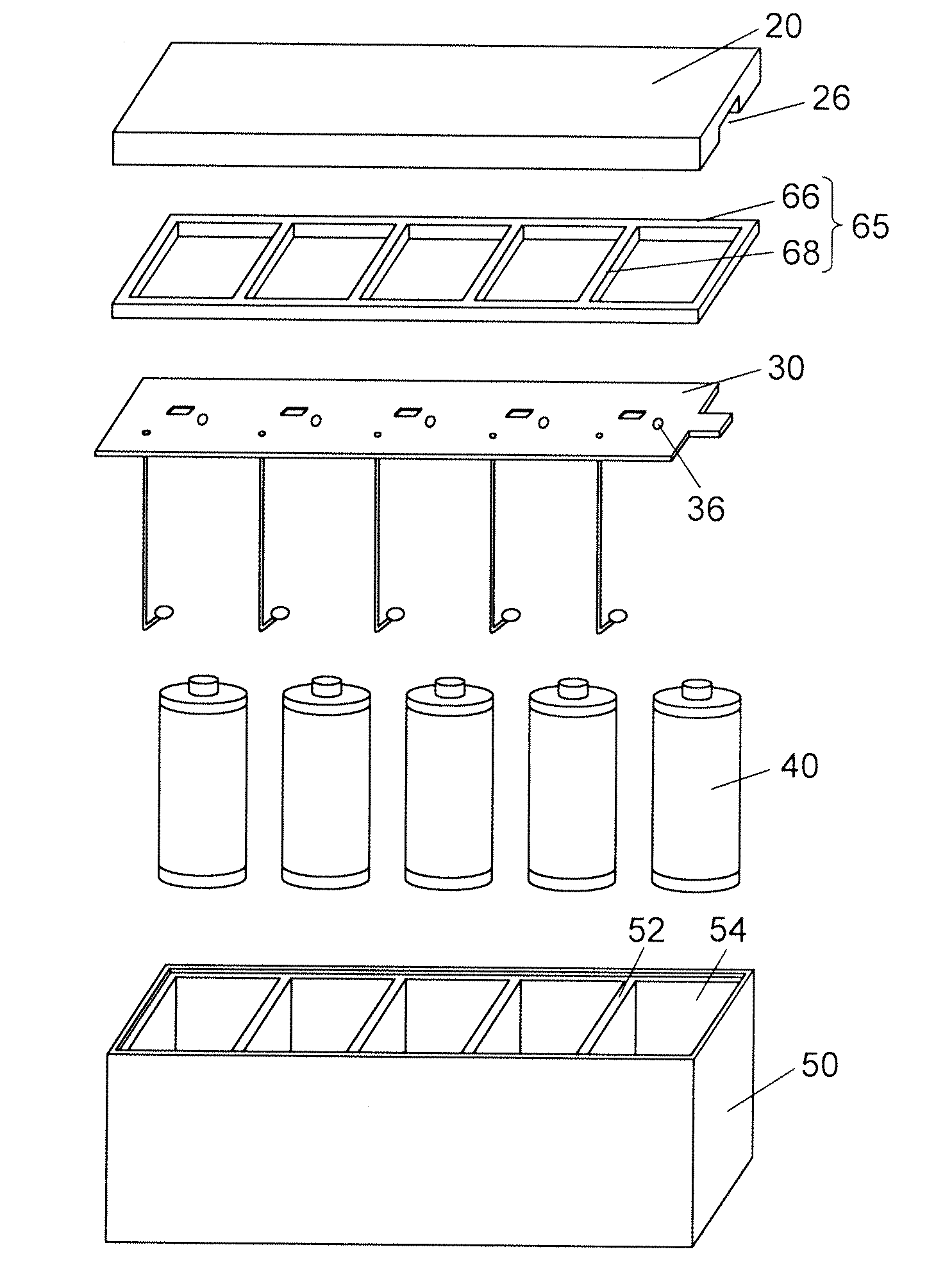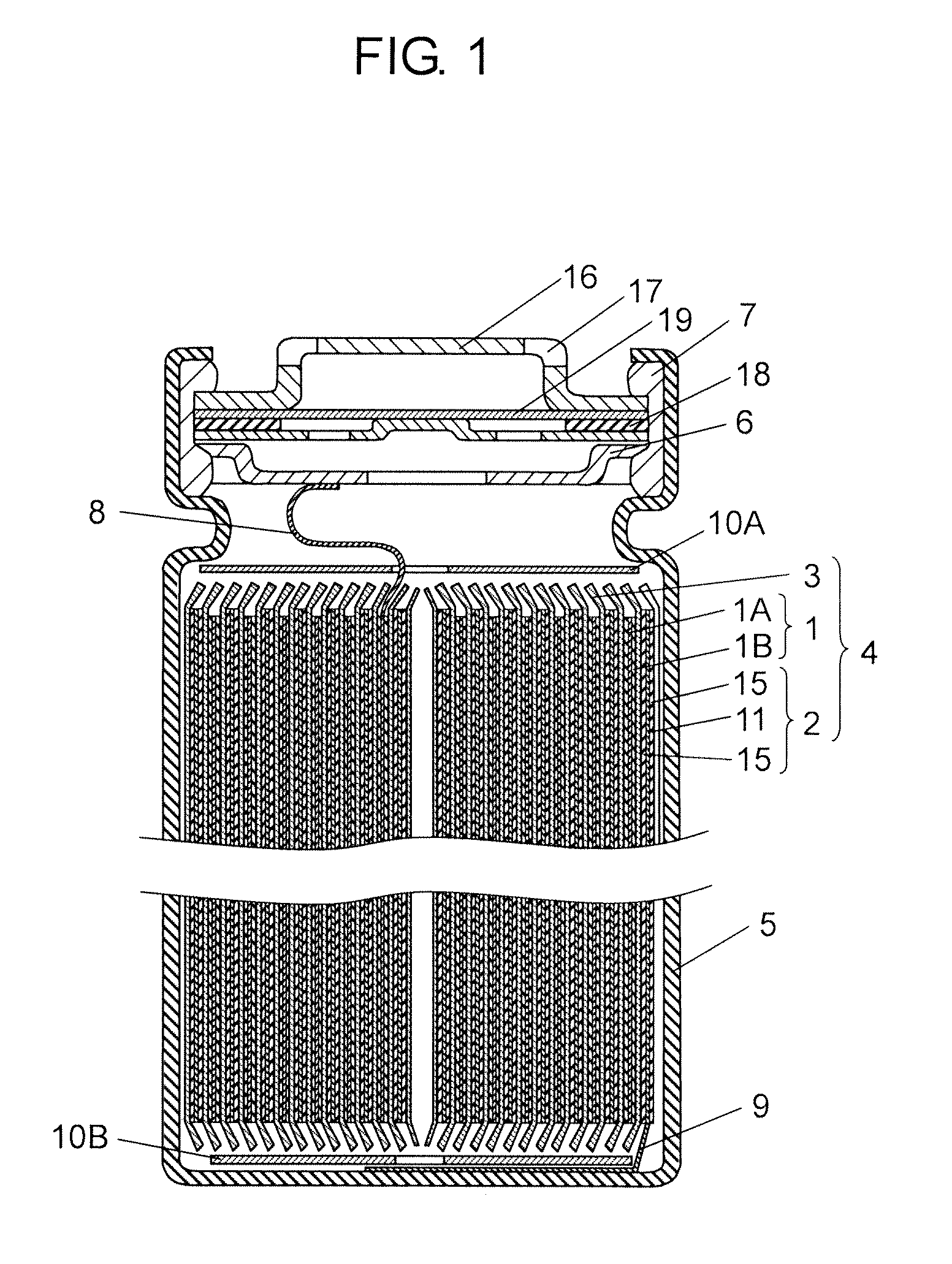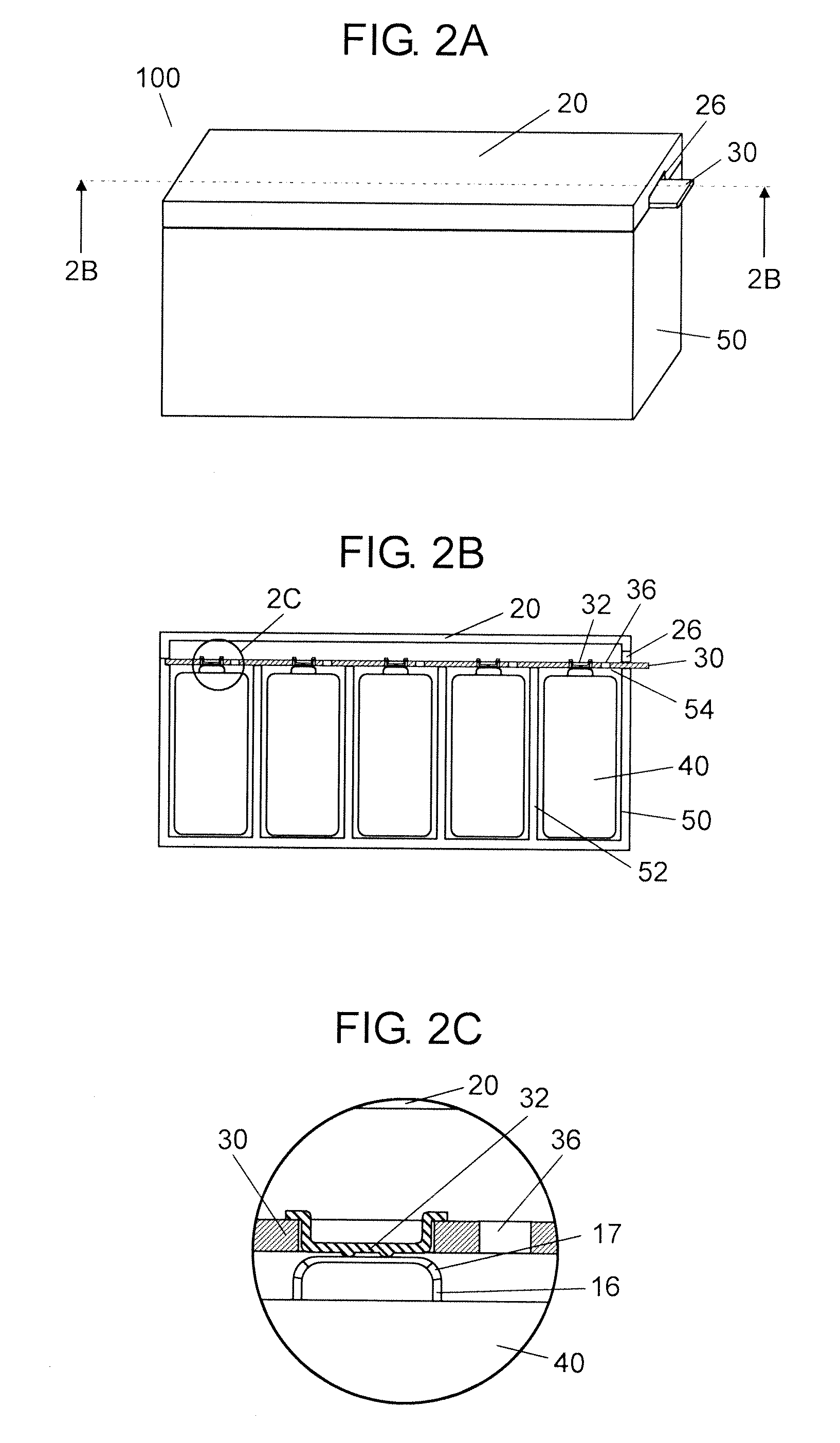Battery module and battery module assembly using same
a battery module and battery module technology, applied in secondary cell servicing/maintenance, cell components, vent arrangements, etc., can solve the problems of reducing the size affecting the service life of the battery module, and generating heat to high temperatures for each battery cell. , to achieve the effect of reducing the space for wiring and minimizing the influence of abnormal heat generation
- Summary
- Abstract
- Description
- Claims
- Application Information
AI Technical Summary
Benefits of technology
Problems solved by technology
Method used
Image
Examples
first exemplary embodiment
[0048]FIG. 1 is a cross-sectional view of a battery cell constituting a battery unit in accordance with a first exemplary embodiment of the present invention. Hereinafter, even when a battery unit includes only one cell, it is referred to as a battery unit, but for convenience of description, it is also referred to as a battery cell.
[0049]As shown in FIG. 1, a cylindrical battery includes electrode group 4 formed of positive electrode 1, negative electrode 2 and separator 3. To positive electrode 1, positive electrode lead 8 made of, for example, aluminum is connected. Negative electrode 2 faces positive electrode 1. To one end of negative electrode 2, negative electrode lead 9 made of, for example, copper is connected. Separator 3 is interposed between positive electrode 1 and negative electrode 2. In this state, positive electrode 1, negative electrode 2 and separator 3 are wound to form electrode group 4.
[0050]On the top and bottom of electrode group 4, insulating plates 10A and ...
second exemplary embodiment
[0077]FIG. 12A is a sectional view of a battery module in accordance with a second exemplary embodiment of the present invention. FIG. 12B is an enlarged sectional view of part 12B in FIG. 12A. Note here that FIG. 12A is a sectional view of a battery module, which corresponds to the sectional view taken along line 2B-2B of FIG. 2A.
[0078]As shown in FIG. 12A, connection terminals 72 having a predetermined shape protrude from wiring board 70 in battery module 200. A predetermined space is provided between wiring board 70 and a first electrode at the vent mechanism side of each battery unit 40. Battery module 200 is different from battery module 100 of the first exemplary embodiment in these points. Note here that since components other than wiring board 70 are the same as those of the first exemplary embodiment, the description thereof is omitted.
[0079]Wiring board 70 formed of, for example, a glass-epoxy substrate includes connection terminals 72, connection plates (not shown), throu...
third exemplary embodiment
[0090]FIGS. 16A and 16B are assembly perspective views showing a battery module assembly in accordance with a third exemplary embodiment of the present invention. Battery module assembly 400 shown in FIG. 16A has a configuration in which four battery modules 100 described in the first exemplary embodiment are arranged and connected by connection member 450. Furthermore, battery module assembly 500 shown in FIG. 16B has a configuration in which two units including two battery modules 100, which is described in the first exemplary embodiment, are piled in two stages longitudinally, and connected by connection member 550. Battery modules 100 are connected in parallel or in series, or combination thereof via connection member 450 or 550.
[0091]According to this exemplary embodiment, depending upon the applications of use, highly versatile battery module assemblies 400 and 500 having arrangement space and necessary voltage and capacity can be configured by arbitrarily combining battery mo...
PUM
| Property | Measurement | Unit |
|---|---|---|
| thickness | aaaaa | aaaaa |
| height | aaaaa | aaaaa |
| outer diameter | aaaaa | aaaaa |
Abstract
Description
Claims
Application Information
 Login to View More
Login to View More - R&D
- Intellectual Property
- Life Sciences
- Materials
- Tech Scout
- Unparalleled Data Quality
- Higher Quality Content
- 60% Fewer Hallucinations
Browse by: Latest US Patents, China's latest patents, Technical Efficacy Thesaurus, Application Domain, Technology Topic, Popular Technical Reports.
© 2025 PatSnap. All rights reserved.Legal|Privacy policy|Modern Slavery Act Transparency Statement|Sitemap|About US| Contact US: help@patsnap.com



